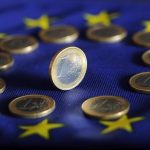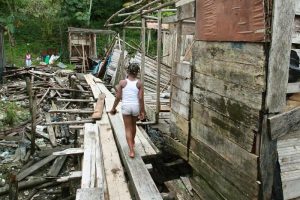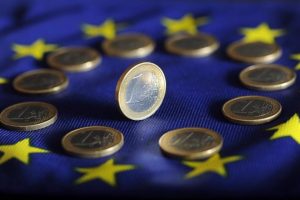In 2022, 224,579 million dollars of foreign direct investment (FDI) entered Latin America and the Caribbean, a figure 55.2% higher than that registered in 2021 and the highest value since records have been kept, the Economic Commission for America reported today. Latin America and the Caribbean (ECLAC).
This result would be explained mainly by the increase in FDI in some countries, particularly Brazil; due to the growth of all the components of FDI, especially the reinvestment of profits; and by the rise in FDI in the services sector. This dynamic is consistent with the post-pandemic recovery and it is not clear if it will remain at similar levels in 2023, says the annual report Foreign Direct Investment in Latin America and the Caribbean 2023.
Since 2013, FDI inflows in Latin American and Caribbean countries did not exceed 200,000 million dollars. The weight of these flows in regional GDP also increased in 2022, reaching 4.0%, according to the document.
“The challenge of attracting and retaining direct foreign investment that effectively contributes to the sustainable and inclusive productive development of the region is still more relevant than ever. There are new opportunities in an era of reconfiguration of global value chains and geographic relocation of production in the face of changing globalization,” said ECLAC Executive Secretary, José Manuel Salazar-Xirinachs, who presented the main conclusions of the study at a conference in press in Santiago de Chile.
The senior United Nations official emphasized that “the challenge is not only to attract and retain, but also to maximize the contribution of FDI to development, and for this, countries must pay attention to post-establishment productive development policies, which include the promotion of productive chains, value addition and promotion policies in value chains, development of human resources, infrastructure and logistics, and construction of local capacities”.
The world panorama of FDI in 2022 was heterogeneous, indicates ECLAC. While these flows grew in Latin America and the Caribbean and in other regions of the world, they decreased in the United States and in some countries of the European Union. In total, global FDI inflows were down 12% from 2021 and totaled $1.29 trillion.
According to the report, almost all the countries of Latin America and the Caribbean received more foreign direct investment in 2022. The list is led by Brazil (which received 41% of the regional total and ranks as the fifth destination for global FDI), followed by from Mexico (17%), Chile (9%), Colombia (8%), Argentina (7%) and Peru (5%).
Costa Rica was the main recipient of foreign direct investment in Central America; in Guatemala these flows recorded a significant drop due to an extraordinary value in 2021, but returned to their historical average.
The variation in FDI inflows was also positive in the Caribbean, driven mainly by higher investment in the Dominican Republic, which was the second largest recipient country after Guyana.
At the regional level, 54% of foreign direct investment entered the services sector, although both the manufacturing and natural resources sectors rebounded. Investments in financial services; electricity, gas and water; information and communications; and transportation-related services had the largest share in the services category.
The United States (38% of the total) and the European Union (17%, excluding the Netherlands and Luxembourg) were the main investors in the region, while FDI from countries in the same region of Latin America and the Caribbean had a significant jump from 9% to 14% of the total.
Indeed, the document Foreign Direct Investment in Latin America and the Caribbean 2023 It accounts for an increase of more than 80% in FDI from Latin America and the Caribbean to the same region or other destinations. In 2022, the amount invested abroad by Latin American transnational companies, known as trans-Latinas, reached historic levels: 74,677 million dollars, being the highest figure recorded since this series began to be compiled in the 1990s.
On the other hand, the amount of FDI project announcements in Latin America and the Caribbean grew by 93% in 2022, totaling close to 100,000 million dollars. For the first time since 2010, the hydrocarbons sector (coal, oil and gas) led the ads, with 24% of the total, followed by the automotive sector (13%) and renewable energy (11%).
The study also includes two chapters that analyze FDI trends in non-renewable and renewable energies in the context of the energy transition and compliance with the Sustainable Development Goals. They discuss the key role of governments in this matter, identify challenges and opportunities, and make policy recommendations.
The energy transition is identified by ECLAC as one of the driving sectors of economic growth, which can become a great engine of the productive transformation of the region, for which the countries and their territories should prioritize it within the framework of their policies and agendas. of productive development.
The percentage of renewable energy installed capacity in Latin America and the Caribbean is higher than the world average, and the electricity generation matrix is one of the cleanest in the world. Therefore, if it increases its supply of renewable energy, the region could become the origin of the production of goods that today are produced in countries with relatively less clean matrices. FDI can play a key role in accelerating the energy transition, facilitating technology transfer and enabling emerging technologies.
Governments must lead the coordination of strategies for the success of the energy transition in the region, underlines the Commission. “Their responsibility includes guaranteeing the radical reduction of non-renewable energy activities as required by climate commitments, in addition to mitigating their negative effects and their economic and social costs, especially in terms of investment, employment and income. One of its central functions is to develop long-term policies that promote investment in renewable energy sources so that the transition is fast and safe, and does not leave the region behind, in a context in which energy from clean sources is a competitive factor”, says the study.
However, ECLAC also warns that in this process the importance that the non-renewable energy sector still has for some countries in the region should be considered, especially in terms of income generation to meet social demands, productive development and security. energetic.
Beyond the challenges of the energy transition, the report insists that the countries of Latin America and the Caribbean must improve the design of investment attraction policies and strengthen their institutional capacities in this area. It is essential that progress be made in articulating efforts to attract FDI with the productive development strategies of the countries and their territories, and that FDI begin to be used more directionally as a strategic tool to advance in the sustainable productive development processes.












